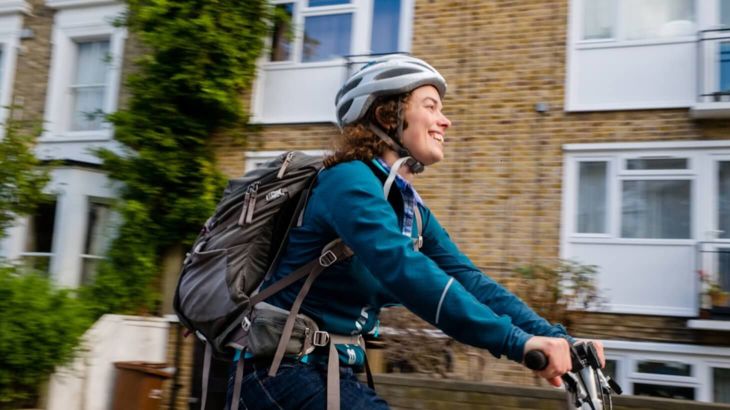We present how spatial planning can help us to integrate planning and transport policy and practice, potential and benefits of prioritising active travel and public transport, practical approaches to integrating housing growth with walking, cycling and public transport and funding mechanisms.

1. Aligning housing growth and planning with active travel and public transport
Local population growth and the need to build more homes for people will inevitably lead to more journeys and pressure on local travel networks. This can result in greater local congestion and pollution with corresponding negative consequences for the economy.
Walking, cycling and public transport have a significant role to play in making transport run more efficiently. Therefore, integrating planning and housing growth with transport planning from the outset can enable efficient and sustainable mobility to be embedded into plans for housing growth and other development.
Part 1 of this toolkit will introduce the benefits, policy context, approaches and funding mechanisms to align walking, cycling and public transport with housing growth and planning.
Aligning housing growth and planning with active travel and public transport toolkit contents
- How spatial planning can help us to integrate planning and transport policy and practice.
- The potential and benefits of prioritising active travel and public transport.
- Practical approaches to integrate housing growth with walking, cycling and public transport
- Funding mechanisms.
Aligning housing growth and planning with active travel and public transport downloadable resources
Aligning housing growth and planning with active travel and public transport (PDF)
Aligning housing growth and planning with active travel and public transport Slidepack (PDF)
2. Planning housing growth to enable active travel and public transport
The location and design of housing influences how people travel, and plays a significant role in encouraging economic vibrancy, access to education, workplaces and retail and community cohesion.
Building new homes within existing towns and cities means people are located near services and venues that people travel to on a regular basis. This reduces the overall distances travelled thereby reducing transport demand. Shorter, more localised journeys allow higher levels of cycling and walking and lend themselves to public transport - therefore reducing dependence upon the car and mitigating negative impacts such as traffic congestion and air pollution.
Large scale new development in suburban and rural areas, including new settlements, allow building in a well-planned way and can have a number of benefits including the provision of sustainable and affordable transport infrastructure in the right places, a mix of high quality homes to meet local need, and creating low carbon lifestyles by integrating green travel options that encourage walking and cycling.
Planning housing growth to enable active travel and public transport toolkit contents
- The benefits of building in urban areas and the importance of proximity, density and mixed-use principles.
- The opportunities presented when building in suburban and rural areas, including new settlements
Planning housing growth to enable active travel and public transport downloadable resources
Planning housing growth to enable active travel and public transport (PDF)
Planning housing growth to enable active travel and public transport Slidepack (PDF)
3. Active travel and public transport planning in new housing developments
Transport planning that supports greater use of walking, cycling and public transport should be an essential part of the planning of all new developments. Generally, the sooner sustainable transport is fully considered within the planning process of a new development, the more efficient their location, use and value will be.
There are a number of provisions that can be undertaken within the development itself to maximise sustainable transport. This should include:
- Walking provision
- Cycling infrastructure
- Public transport provision
- Vehicle management
- On-site car clubs
New housing developments provide a blank canvas within which to design much better and more integrated solutions as part of the overall design of the development itself.
Active travel and public transport planning in new housing developments toolkit contents
- How transport planning can enable walking, cycling and public transport within new developments.
- Increasing active travel to and from new developments.
- The integration of cycling and walking in public transport.
Active travel and public transport planning in new housing developments downloadable resources
Active travel and public transport planning in new housing developments (PDF)
Active travel and public transport planning in new housing developments Slidepack (PDF)

